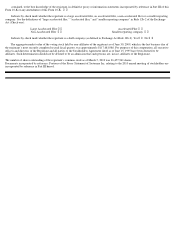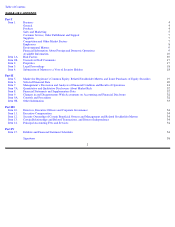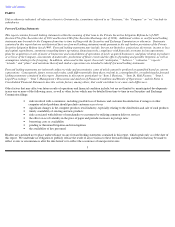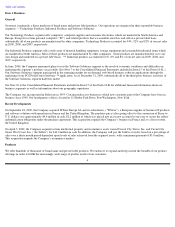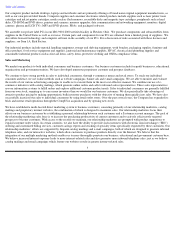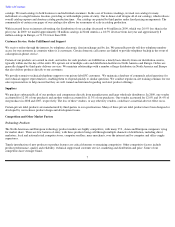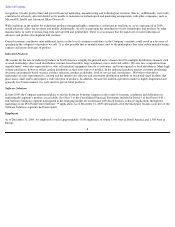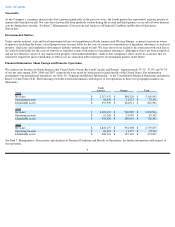Circuit City 2009 Annual Report Download - page 13
Download and view the complete annual report
Please find page 13 of the 2009 Circuit City annual report below. You can navigate through the pages in the report by either clicking on the pages listed below, or by using the keyword search tool below to find specific information within the annual report.
Table of Contents
economic and market conditions and allow us to continue to achieve the growth rates and levels of profitability we have recently
experienced. In addition, costs actually incurred in connection with our restructuring actions may be higher than our estimates of
such costs and/or may not lead to the anticipated cost savings.
•
The markets for our products and services are extremely competitive and if we are unable to successfully respond to our
competitors’ strategies our sales and gross margins will be adversely affected.
We may not be able to compete effectively with current or future competitors. The markets for our products and services are
intensely competitive and subject to constant technological change. We expect this competition to further intensify in the future.
Competitive factors include price, availability, service and support. We compete with a wide variety of other resellers and retailers,
as well as manufacturers. Many of our competitors are larger companies with greater financial, marketing and product development
resources than ours. In addition, new competitors may enter our markets. This may place us at a disadvantage in responding to
competitors’ pricing strategies, technological advances and other initiatives, resulting in our inability to increase our revenues or
maintain our gross margins in the future.
In most cases our products compete directly with those offered by other manufacturers and distributors. If any of our competitors
were to develop products or services that are more cost-effective or technically superior, demand for our product offerings could
decrease.
Our gross margins are also dependent on the mix of products we sell and could be adversely affected by a continuation of our
customers’ shift to lower-priced products.
•
State sales tax laws may be changed which could result in ecommerce and direct mail retailers having to collect sales taxes in states
where the current laws do not require us to do so. This could reduce demand for our products in such states and could result in us
having substantial tax liabilities for past sales.
Our United States subsidiaries collect and remit sales tax in states in which the subsidiaries have physical presence or in which we
believe nexus exists which obligates us to collect sales tax. Other states may, from time to time, claim that we have state-related
activities constituting a sufficient nexus to require such collection. Additionally, many other states seek to impose sales tax collection
obligations on companies that sell goods to customers in their state, or directly to the state and its political subdivisions, even without
a physical presence. Such efforts by states have increased recently, as states seek to raise revenues without increasing the tax burden
on residents. We rely on United States Supreme Court decisions which hold that, without Congressional authority, a state may not
enforce a sales tax collection obligation on a company that has no physical presence in the state and whose only contacts with the
state are through the use of interstate commerce such as the mailing of catalogs into the state and the delivery of goods by mail or
common carrier. We cannot predict whether the nature or level of contacts we have with a particular state will be deemed enough to
require us to collect sales tax in that state nor can we be assured that Congress or individual states will not approve legislation
authorizing states to impose tax collection obligations on all e-commerce and/or direct mail transactions. A successful assertion by
one or more states that we should collect sales tax on the sale of merchandise could result in substantial tax liabilities related to past
sales and would result in considerable administrative burdens and costs for us and may reduce demand for our products from
customers in such states when we charge customers for such taxes.
11


